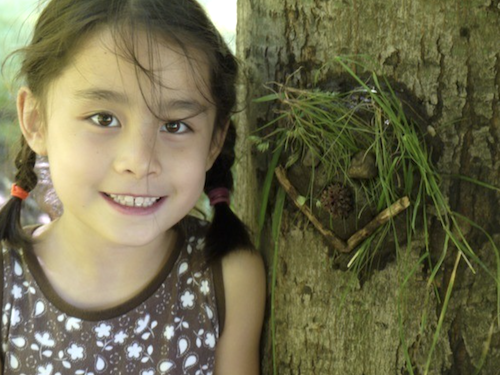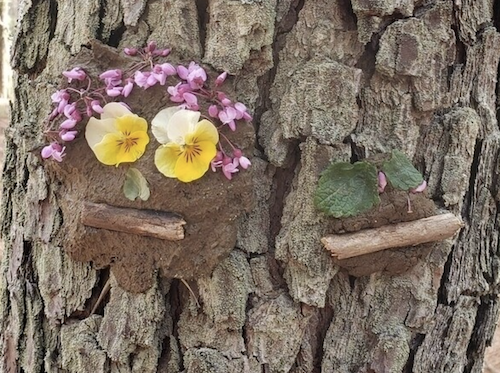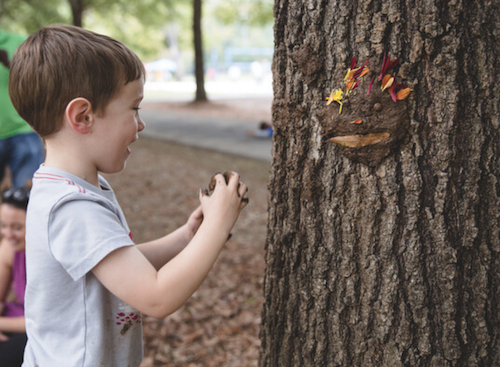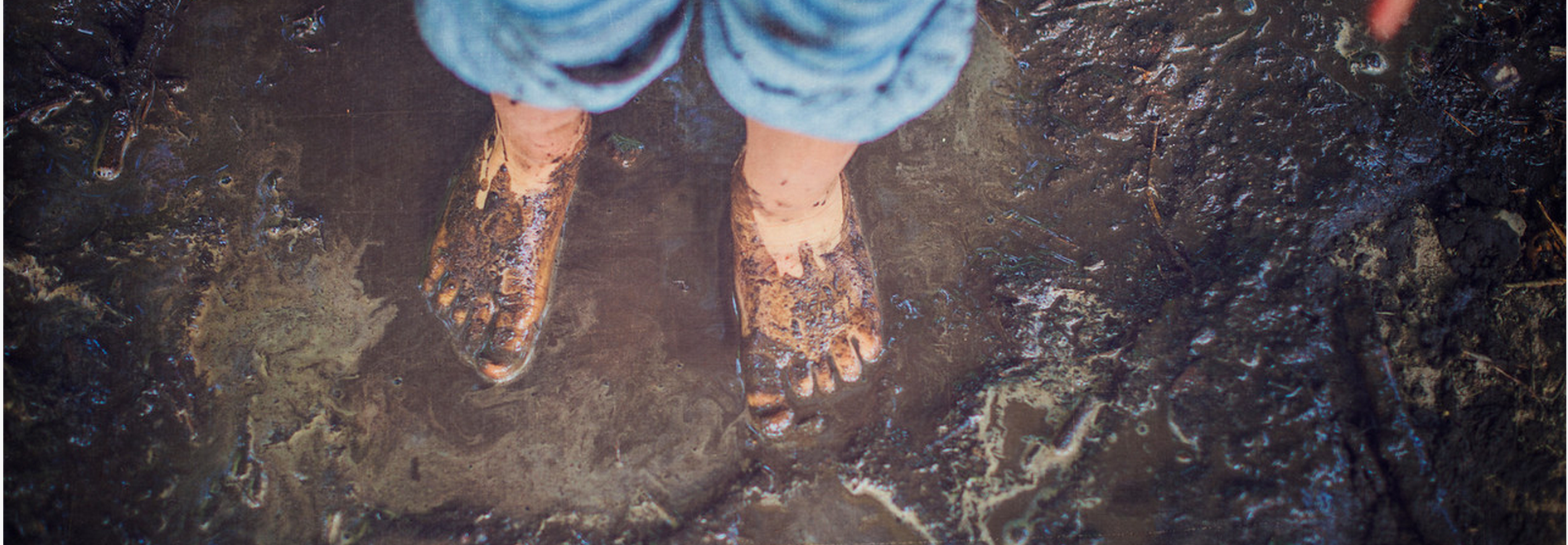Make Mud Faces
-
Age: 0 to 8+
-
Time: 1 hour+
-
Materials: dirt, water, objects from nature, mirror
- Skills: Creativity, Sensory, Empathy
This week at Tinkergarten Anywhere we'll help kids identify the six basic human emotions and learn to read others' emotions by looking at their faces. We’ll look at our faces and make faces to match emotions. Then, we'll use nature treasures and mud and/or forest putty to create faces to show various emotions.
The Guide
Step 1: Watch the Tinkergarten Anywhere Making Faces video lesson.
Hop into your My Tinkergarten trial dashboard to watch the Making Faces video lesson. Kids can watch how Meghan and other explorers make faces to explore emotions, then get inspired to make their own faces to show how they feel!
Not yet enrolled in Tinkergarten Anywhere? Sign up here.
Not yet enrolled in Tinkergarten Anywhere? Sign up here.
Step 2: Explore faces and feelings.
Ask your child how they are feeling today. Share how you are feeling, too. Then, look at a mirror together and share what you notice about the facial features and expressions you see. Have fun making faces together to express each of the six basic emotions (happy, sad, angry, surprised, scared, and disgusted).
Ask, “Would you like to make a face to show how you are feeling?”
Step 3: Gather features for your face.
Give your child a container (e.g. cup, bucket, small bag) and head outside to gather objects to use for the various features of their face. As they collect, prompt thinking by asking what might make a good mouth, eyes, nose, ears, hair, etc.
Step 4: Make and plop mud patties.
All dirt is different, so add water gradually until your mixture thickens to the right consistency (think thick brownie batter). For each face, make a softball-sized mud patty, flatten it a bit, then give it a good plop onto the bark of a tree, giving it a few finger pushes around the edge to help it really stick.
Step 5: Build your face.
While kids work, remain available to help them if they ask, but let them do as much as they can. If kids' faces fall, help them collect the mud, repack and re-plop. Encourage kids to tell you as much as they can about the face and how it is feeling. Wonder how other people who see their mud face might feel, too.
Extend Play!
If kids are really enjoying making mud faces, try some of these ideas to keep the play going:
- Mud Families—Invite kids to create a series of faces that represent the special people in their family and/or community. Read the full DIY activity here.
- Food Faces—During snack time or on a picnic, invite kids to make a face on a plate using vegetables and fruits.
- Forest Putty Faces—As an alternative to mud, invite kids to use forest putty (aka homemade play-dough) to make a face. Find our forest putty recipe here.
- Drawing Faces—Give kids a handheld mirror or set them up in a space with a wall-mounted mirror and welcome them to draw their face. If kids are loving this activity, invite them to make and draw several faces that show different types of emotions.
- Faces and Feelings Song! Help kids explore the connection between facial expressions and emotions with the Faces and Feelings Song. Download the lyrics, sing along, and make some faces together!
Why is this activity great for kids?
This activity supports kids in developing emotional empathy, the ability to understand one's own emotions and the emotions of others. Looking at faces helps kids identify the 6 basic emotions (Happiness, Sadness, Anger, Fear, Surprise and Disgust) in themselves and others. Kids also develop flexible thinking, a key component of creativity, as they transform mud and nature treasures into faces. Finally, interacting with water and mud (or forest putty) is wonderfully stimulating to the senses of touch, sight, sound, and smell.





